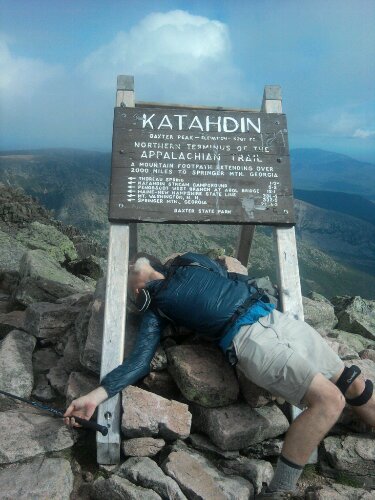Look what arrived in the mail.
I never bothered to frame any diplomas, but this now hangs prominently in my office.
Sagebrush personal hiking blog
It seems to be a tradition among many long distance hikers to mail out cards or postcards announcing completion of The Trail. (See August 2 Daily Photo). I finally got around to composing a card, only one month late, and mailed to friends, family, and several hostels and trail angels, demonstrating that I finally finished this thing.
Did you not get a card and need one? Let me know.

Summit of Mount Katahdin Hike finished (once I got safely down)